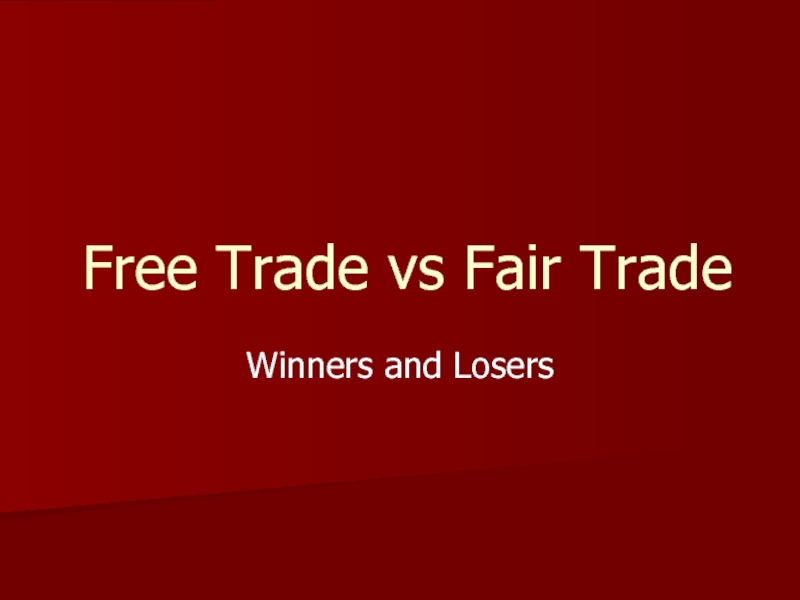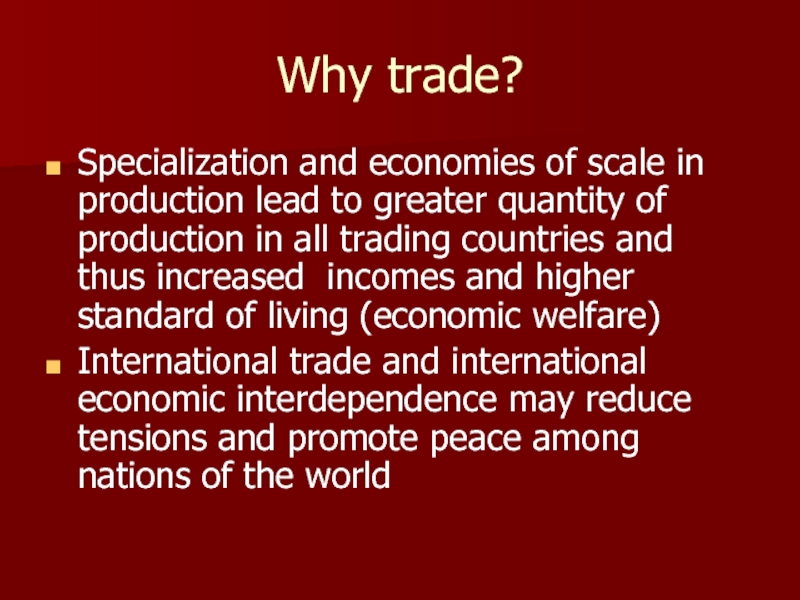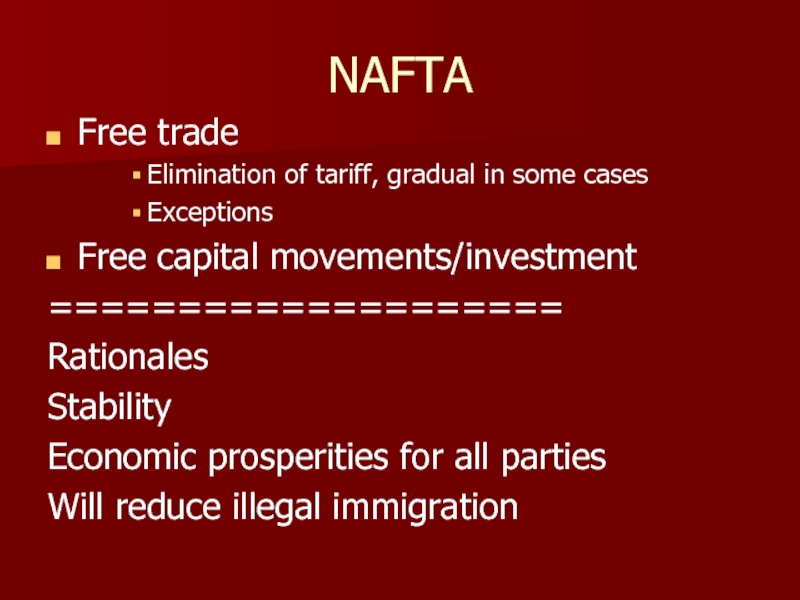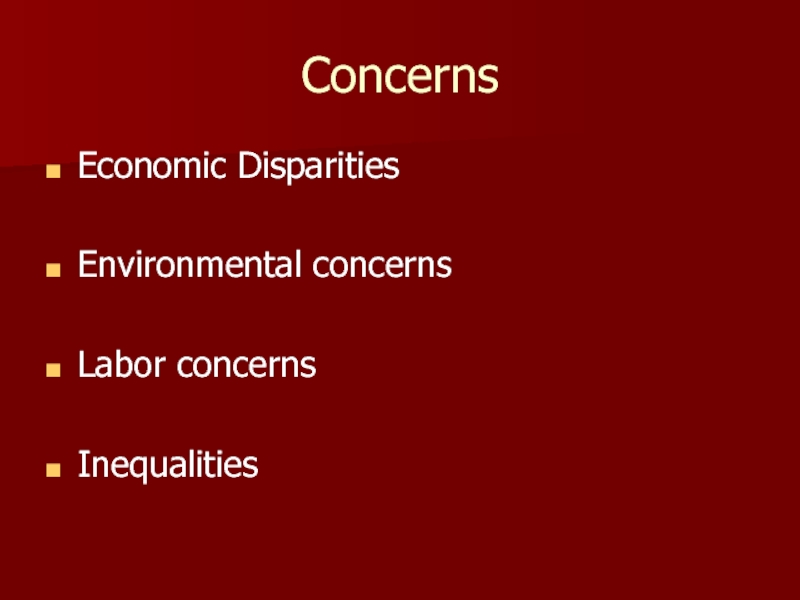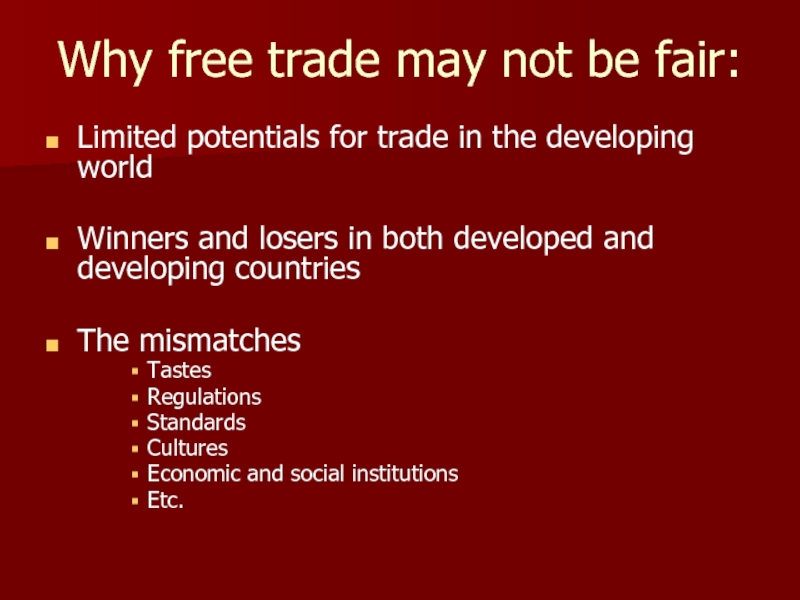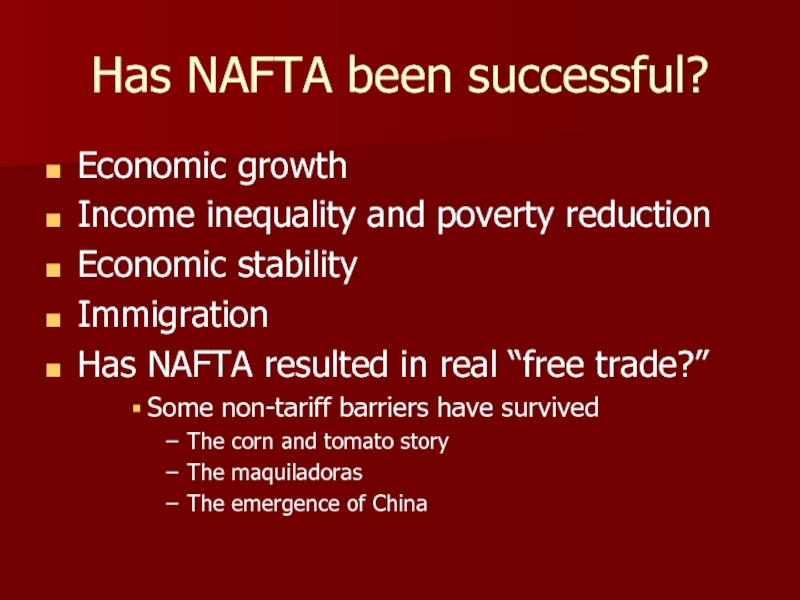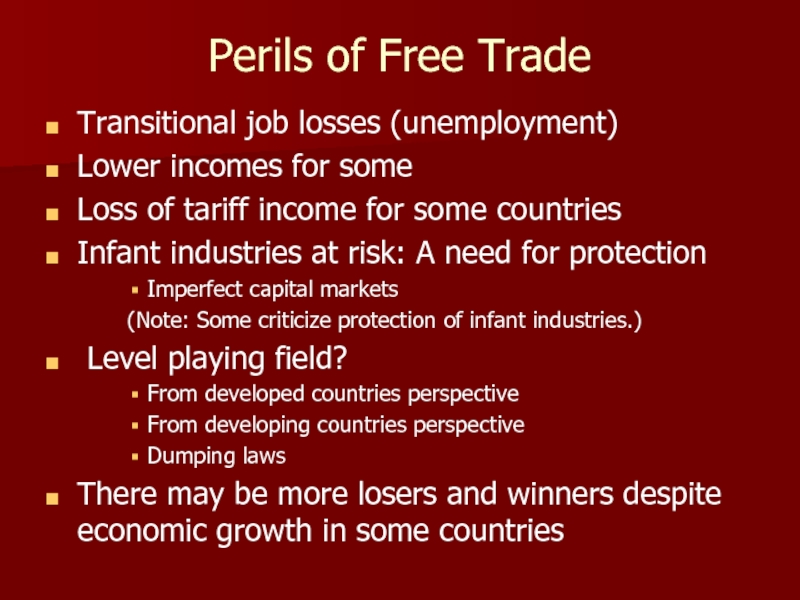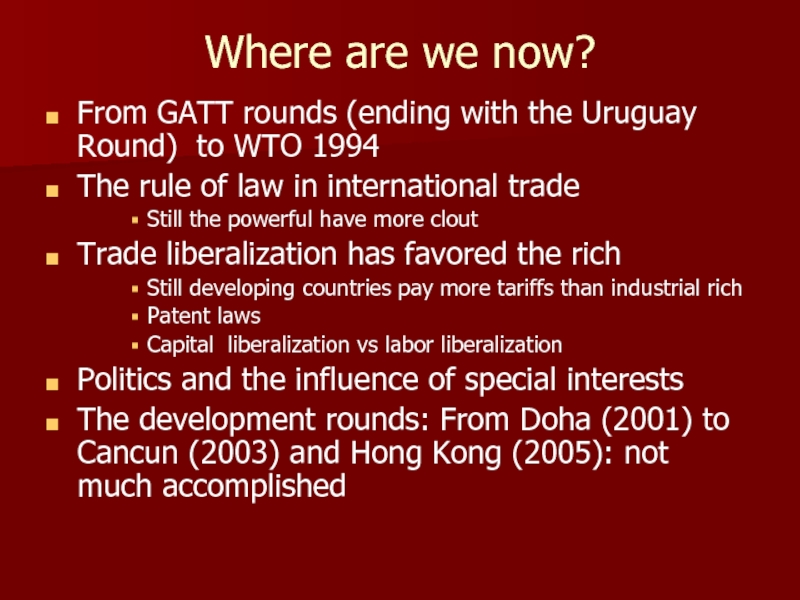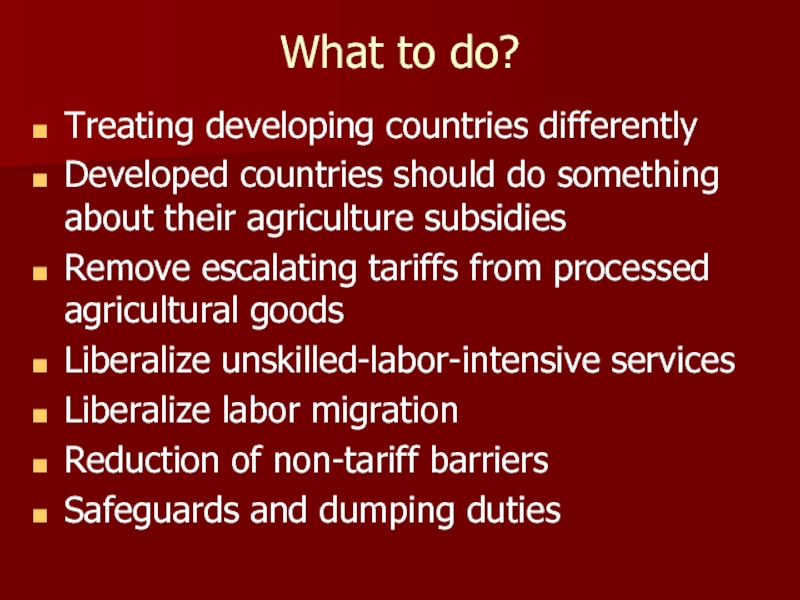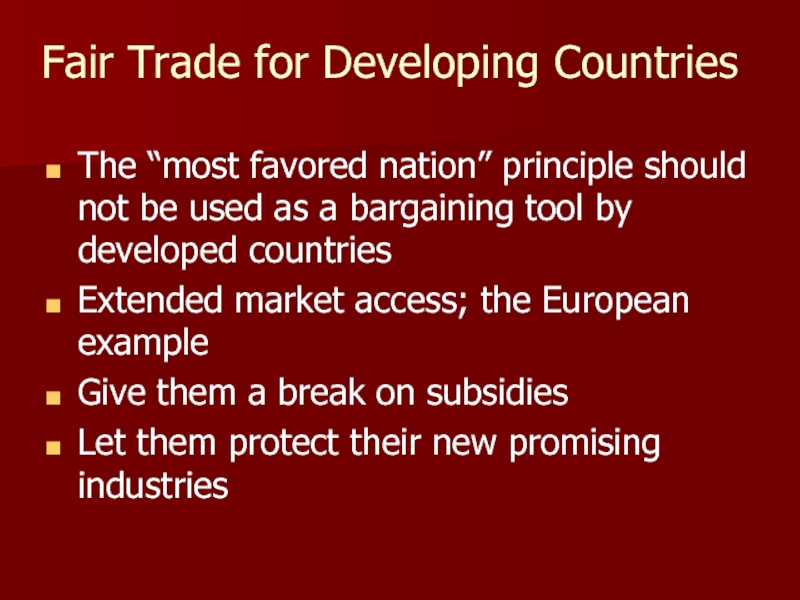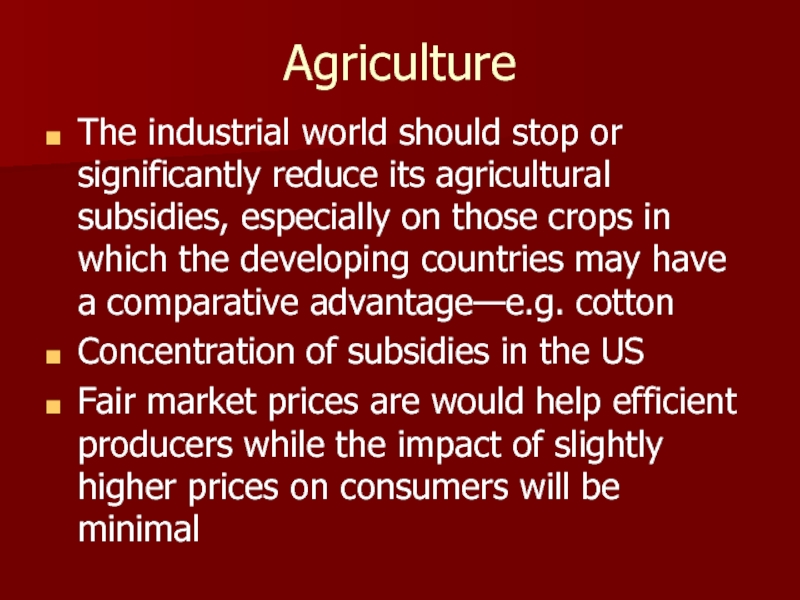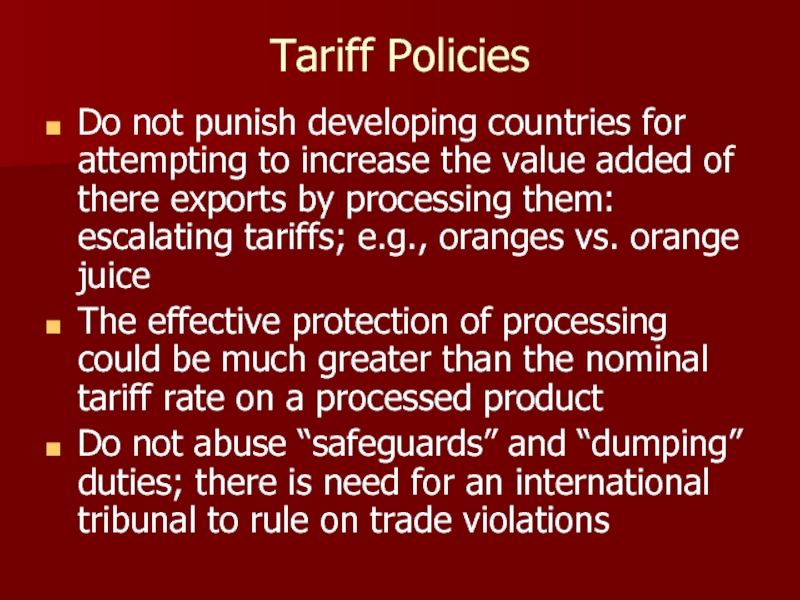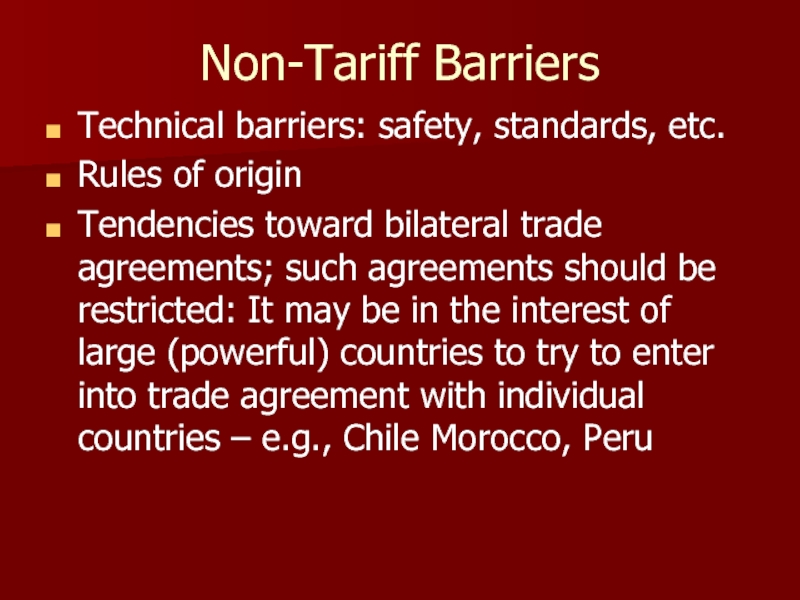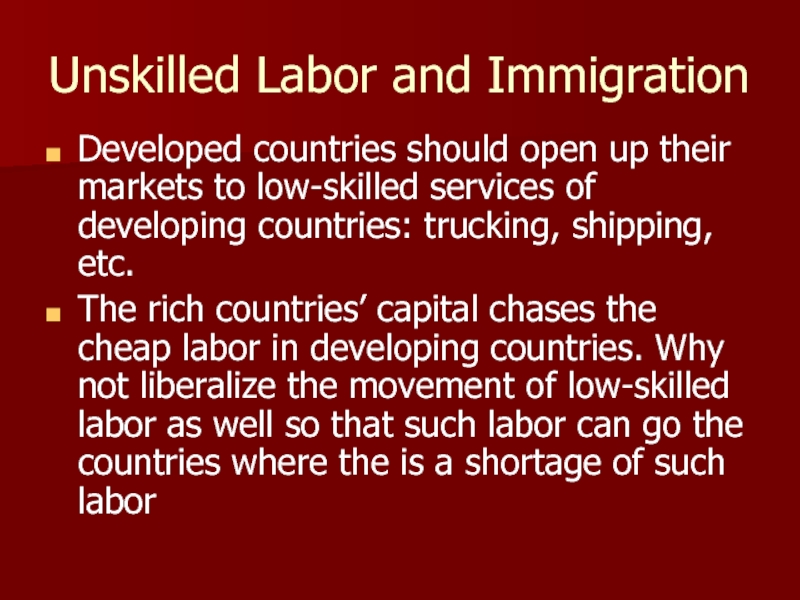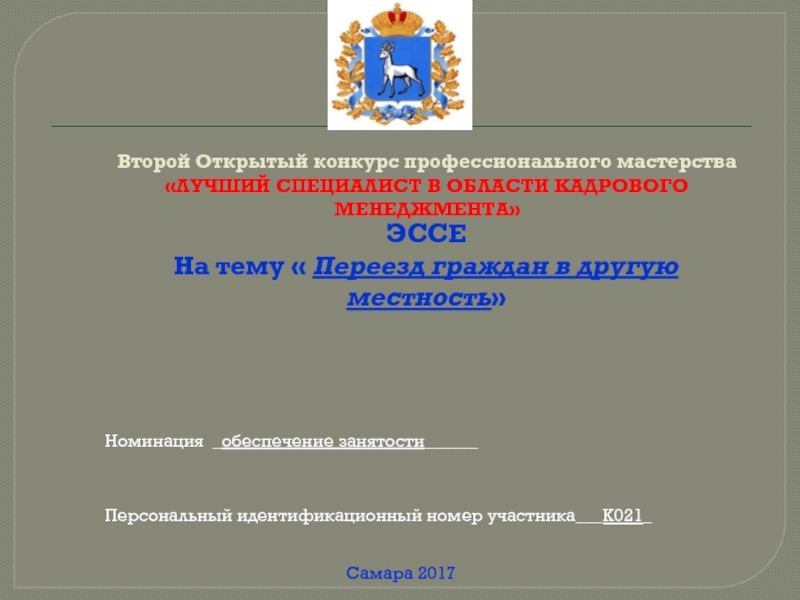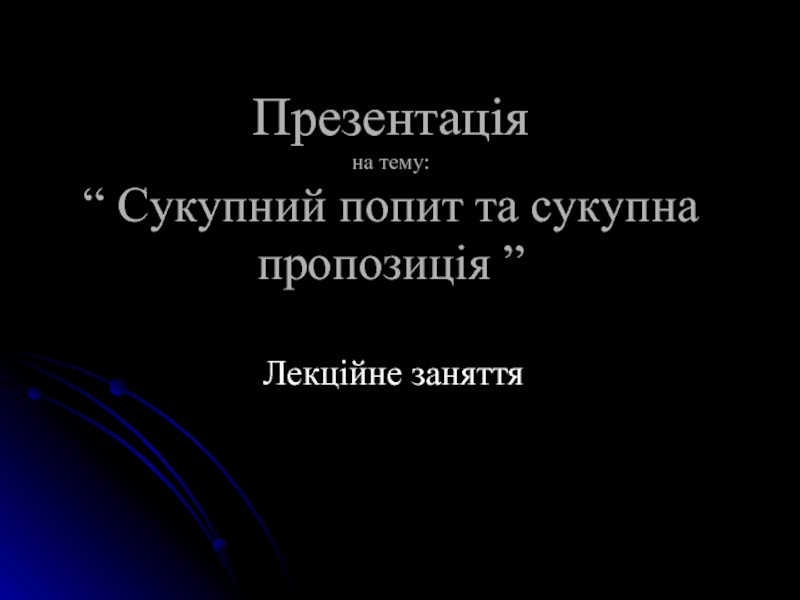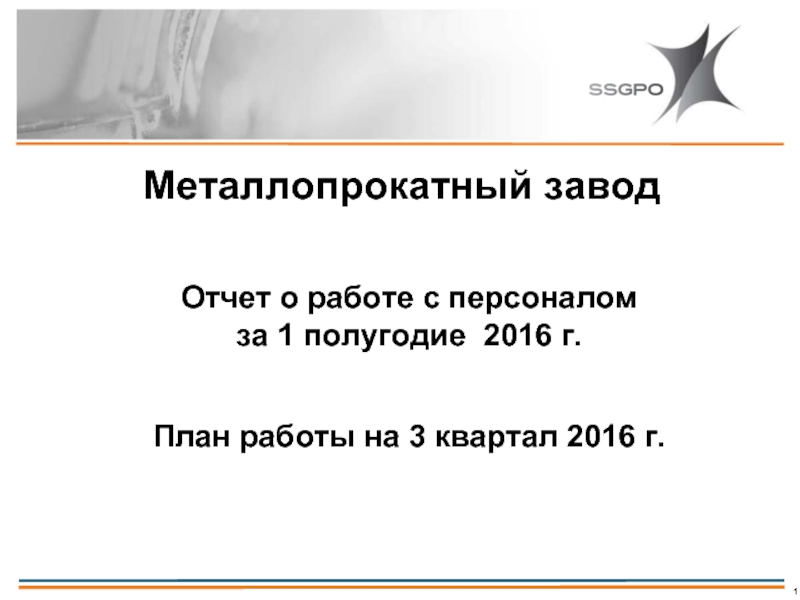- Главная
- Разное
- Дизайн
- Бизнес и предпринимательство
- Аналитика
- Образование
- Развлечения
- Красота и здоровье
- Финансы
- Государство
- Путешествия
- Спорт
- Недвижимость
- Армия
- Графика
- Культурология
- Еда и кулинария
- Лингвистика
- Английский язык
- Астрономия
- Алгебра
- Биология
- География
- Детские презентации
- Информатика
- История
- Литература
- Маркетинг
- Математика
- Медицина
- Менеджмент
- Музыка
- МХК
- Немецкий язык
- ОБЖ
- Обществознание
- Окружающий мир
- Педагогика
- Русский язык
- Технология
- Физика
- Философия
- Химия
- Шаблоны, картинки для презентаций
- Экология
- Экономика
- Юриспруденция
Free Trade vs Fair Trade презентация
Содержание
- 1. Free Trade vs Fair Trade
- 2. Why trade? Specialization and economies of scale
- 3. NAFTA Free trade Elimination of tariff, gradual
- 4. Concerns Economic Disparities Environmental
- 5. Why free trade may not be fair:
- 6. Has NAFTA been successful? Economic growth
- 7. Perils of Free Trade Transitional job
- 8. Where are we now? From GATT rounds
- 9. What to do? Treating developing countries
- 10. Fair Trade for Developing Countries The
- 11. Agriculture The industrial world should stop
- 12. Tariff Policies Do not punish developing
- 13. Non-Tariff Barriers Technical barriers: safety, standards, etc.
- 14. Unskilled Labor and Immigration Developed countries
- 15. Institutional Reforms Who makes the rules
Слайд 2Why trade?
Specialization and economies of scale in production lead to greater
quantity of production in all trading countries and thus increased incomes and higher standard of living (economic welfare)
International trade and international economic interdependence may reduce tensions and promote peace among nations of the world
International trade and international economic interdependence may reduce tensions and promote peace among nations of the world
Слайд 3NAFTA
Free trade
Elimination of tariff, gradual in some cases
Exceptions
Free capital movements/investment
====================
Rationales
Stability
Economic prosperities for all parties
Will reduce illegal immigration
Слайд 5Why free trade may not be fair:
Limited potentials for trade in
the developing world
Winners and losers in both developed and developing countries
The mismatches
Tastes
Regulations
Standards
Cultures
Economic and social institutions
Etc.
Winners and losers in both developed and developing countries
The mismatches
Tastes
Regulations
Standards
Cultures
Economic and social institutions
Etc.
Слайд 6Has NAFTA been successful?
Economic growth
Income inequality and poverty reduction
Economic stability
Immigration
Has NAFTA resulted in real “free trade?”
Some non-tariff barriers have survived
The corn and tomato story
The maquiladoras
The emergence of China
Слайд 7Perils of Free Trade
Transitional job losses (unemployment)
Lower incomes for some
Loss of tariff income for some countries
Infant industries at risk: A need for protection
Imperfect capital markets
(Note: Some criticize protection of infant industries.)
Level playing field?
From developed countries perspective
From developing countries perspective
Dumping laws
There may be more losers and winners despite economic growth in some countries
Слайд 8Where are we now?
From GATT rounds (ending with the Uruguay Round)
to WTO 1994
The rule of law in international trade
Still the powerful have more clout
Trade liberalization has favored the rich
Still developing countries pay more tariffs than industrial rich
Patent laws
Capital liberalization vs labor liberalization
Politics and the influence of special interests
The development rounds: From Doha (2001) to Cancun (2003) and Hong Kong (2005): not much accomplished
The rule of law in international trade
Still the powerful have more clout
Trade liberalization has favored the rich
Still developing countries pay more tariffs than industrial rich
Patent laws
Capital liberalization vs labor liberalization
Politics and the influence of special interests
The development rounds: From Doha (2001) to Cancun (2003) and Hong Kong (2005): not much accomplished
Слайд 9What to do?
Treating developing countries differently
Developed countries should do something
about their agriculture subsidies
Remove escalating tariffs from processed agricultural goods
Liberalize unskilled-labor-intensive services
Liberalize labor migration
Reduction of non-tariff barriers
Safeguards and dumping duties
Remove escalating tariffs from processed agricultural goods
Liberalize unskilled-labor-intensive services
Liberalize labor migration
Reduction of non-tariff barriers
Safeguards and dumping duties
Слайд 10Fair Trade for Developing Countries
The “most favored nation” principle should
not be used as a bargaining tool by developed countries
Extended market access; the European example
Give them a break on subsidies
Let them protect their new promising industries
Extended market access; the European example
Give them a break on subsidies
Let them protect their new promising industries
Слайд 11Agriculture
The industrial world should stop or significantly reduce its agricultural
subsidies, especially on those crops in which the developing countries may have a comparative advantage—e.g. cotton
Concentration of subsidies in the US
Fair market prices are would help efficient producers while the impact of slightly higher prices on consumers will be minimal
Concentration of subsidies in the US
Fair market prices are would help efficient producers while the impact of slightly higher prices on consumers will be minimal
Слайд 12Tariff Policies
Do not punish developing countries for attempting to increase
the value added of there exports by processing them: escalating tariffs; e.g., oranges vs. orange juice
The effective protection of processing could be much greater than the nominal tariff rate on a processed product
Do not abuse “safeguards” and “dumping” duties; there is need for an international tribunal to rule on trade violations
The effective protection of processing could be much greater than the nominal tariff rate on a processed product
Do not abuse “safeguards” and “dumping” duties; there is need for an international tribunal to rule on trade violations
Слайд 13Non-Tariff Barriers
Technical barriers: safety, standards, etc.
Rules of origin
Tendencies toward bilateral
trade agreements; such agreements should be restricted: It may be in the interest of large (powerful) countries to try to enter into trade agreement with individual countries – e.g., Chile Morocco, Peru
Слайд 14Unskilled Labor and Immigration
Developed countries should open up their markets
to low-skilled services of developing countries: trucking, shipping, etc.
The rich countries’ capital chases the cheap labor in developing countries. Why not liberalize the movement of low-skilled labor as well so that such labor can go the countries where the is a shortage of such labor
The rich countries’ capital chases the cheap labor in developing countries. Why not liberalize the movement of low-skilled labor as well so that such labor can go the countries where the is a shortage of such labor
Слайд 15Institutional Reforms
Who makes the rules of international trade?
Who sets the
agenda?
Who enforces the rules and how?
How are disagreements are resolved?
Transparency and openness in processes
Enforcement mechanisms are not effective when used by developing countries; solution: trading “enforcement rights”
Who enforces the rules and how?
How are disagreements are resolved?
Transparency and openness in processes
Enforcement mechanisms are not effective when used by developing countries; solution: trading “enforcement rights”
